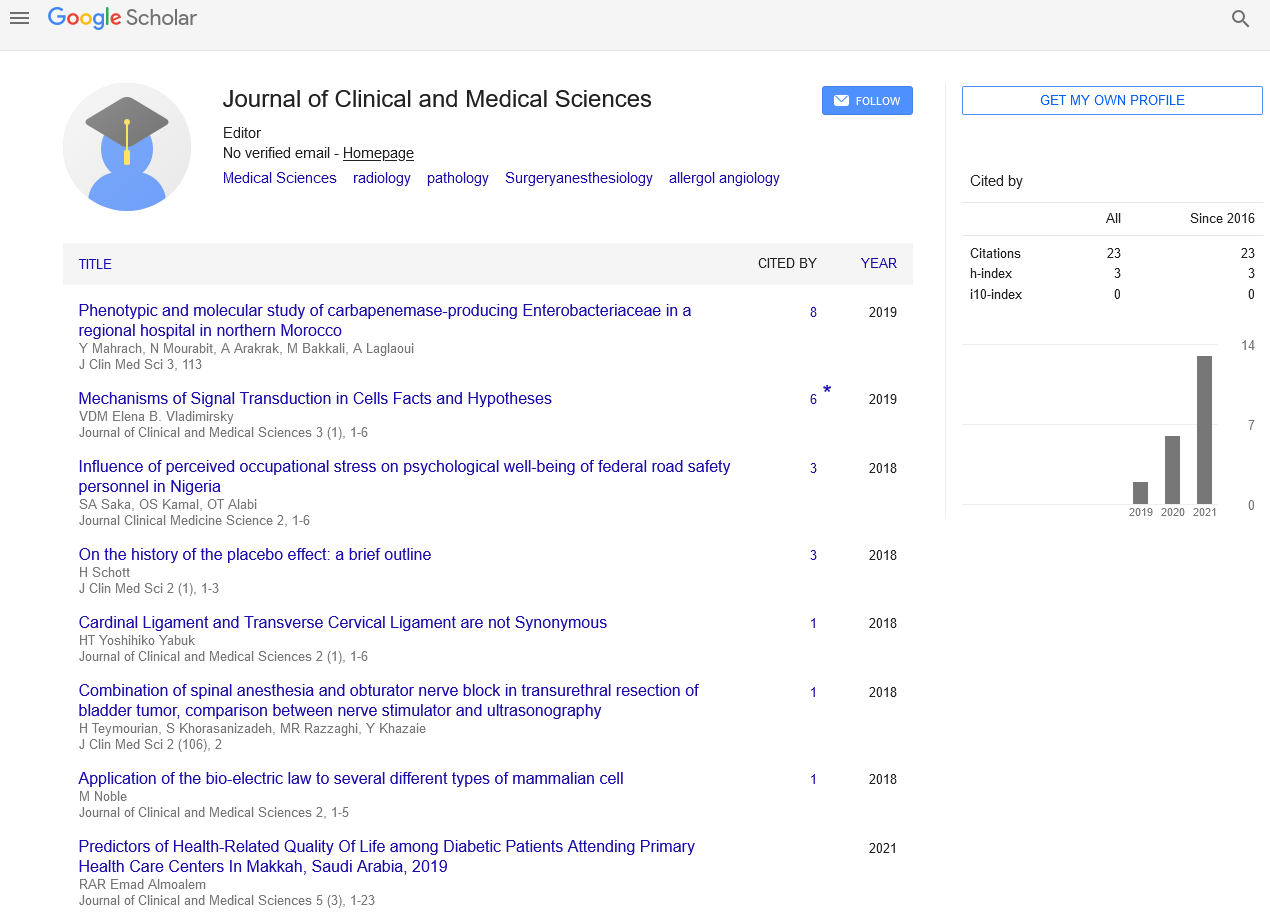Indexed In
- Euro Pub
- Google Scholar
Useful Links
Share This Page
Journal Flyer

Open Access Journals
- Agri and Aquaculture
- Biochemistry
- Bioinformatics & Systems Biology
- Business & Management
- Chemistry
- Clinical Sciences
- Engineering
- Food & Nutrition
- General Science
- Genetics & Molecular Biology
- Immunology & Microbiology
- Medical Sciences
- Neuroscience & Psychology
- Nursing & Health Care
- Pharmaceutical Sciences
Abstract
Treatment Strategies for Toxic Protein Progerin: Hutchinson- Gilford Progeria Syndrome
Hutchinson- Gilford Progeria Syndrome (HGPS; MIM 176670) is a rare fatal genetic disorder similar to a rapidly increasing age in symptoms. Aging is the main risk factor for heart diseases. It is becoming more prevalent in our societies. Hutchinson- Gilford Progeria Syndrome is an extremely infrequent inherited disease characterized by too early and fast aging immediately after being born. It a rare autosomal dominant genetic disorder, in 1 to 4 million births, for which there is no known cure. Children with HGPS succumb to myocardial infection and stroke in their teens and die of progressive vascular disease at an average age of 14 years. The average life of a child with HGPS is about 13 years. Some can die young with the disease and others may live longer, even for 20 years. The aim of this review is to understand the various aspects of disease special emphasis on pathophysiology, symptoms’, and recent trends in medicine and future treatments. Different treatment strategies could be used for the treatment of HGPS including ATP- based therapy, MB treatment, CRISPR Cas9. Vascular calcification results by pyrophosphate deficiency in children with HGPS. The mechanisms involved in vascular calcification in children with HGPS analyzed by the researches on mouse. ATP-based therapy could be used as treatment strategy for this devastating disease and other pyrophosphate related diseases. As HGPS is caused by C to T mutation in 11 exon, LMNA gene instead of activating cryptic site leaves amino acid codes unchanged that result in deletion of amino acids. These changes involves in different mechanisms like mitosis aberration, altered chromatin organization, transcriptional organization that causes nuclear abnormalities. Mitochondria is very intense organelle that plays very important role in our body, it also acts as key element in aging. Abnormal mitochondria can cause many damages by increasing levels of reactive oxygen species and altering DNA and protein structures. Mitochondrial abnormalities also reported in HGPS fibroblasts along with depletion of ATP and altered levels of ROS. HGPS fibroblasts of mouse are treated with methylene blue (MB), an antioxidant that normalizes the mitochondrial abnormalities and aging phenotypes in mouse.
Published Date: 2020-01-23; Received Date: 2019-12-28

